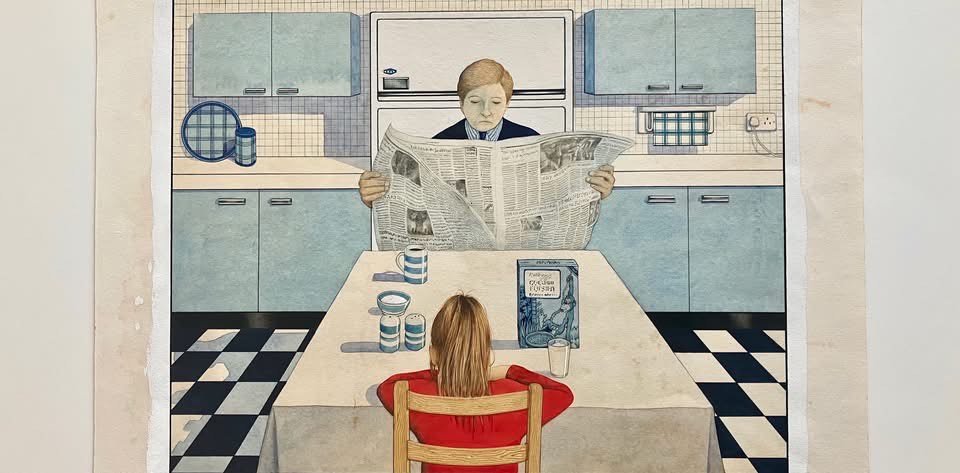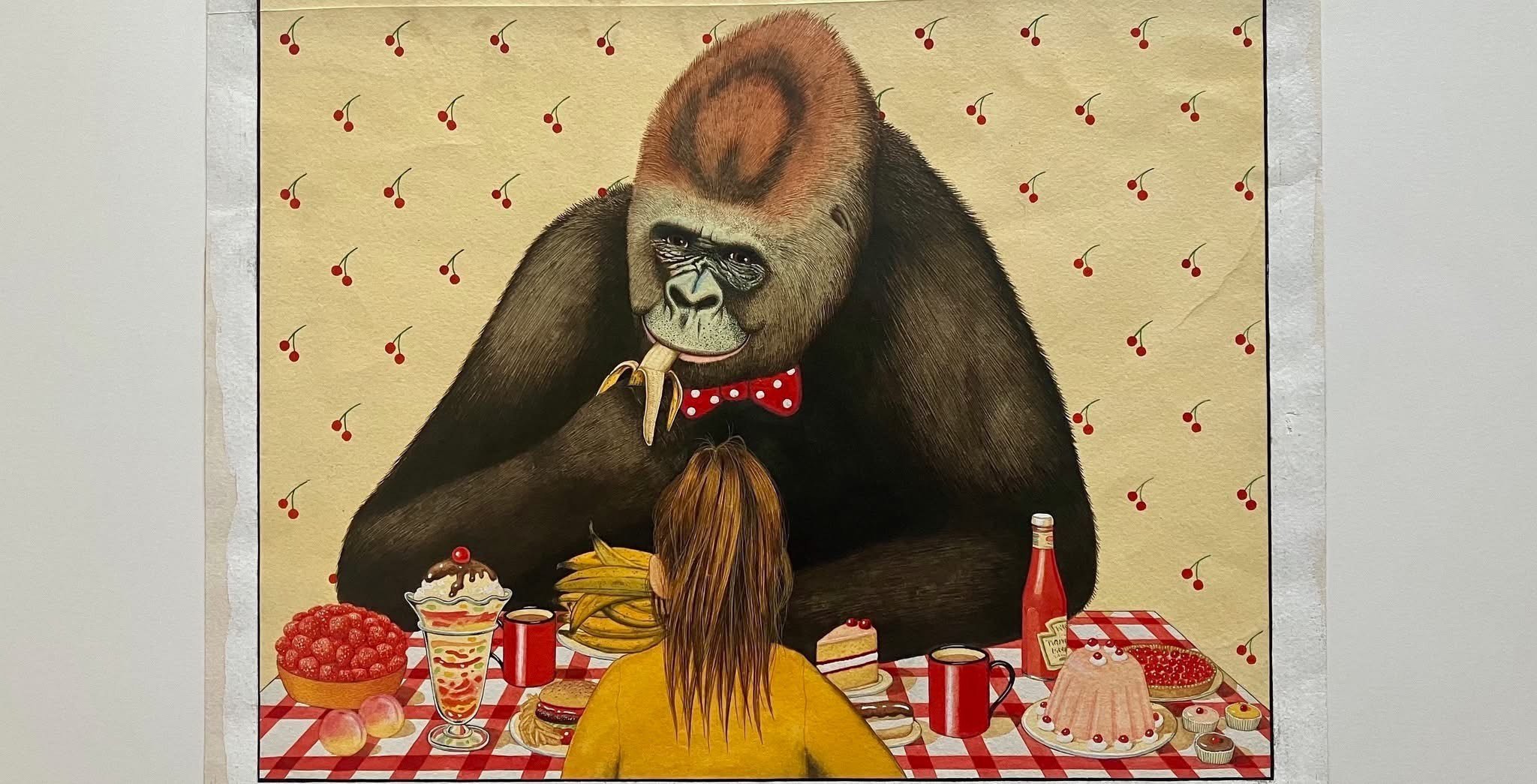Under the child’s gaze with Anthony Browne
I want to spotlight a few books by the author Anthony Browne that have had a meaningful impression on me.
A. Browne as a child painting.
Anthony Browne is a celebrated British author and illustrator of children's books. As a kid he grew up in his parents pub. Before he made children's literature, he worked illustrating greeting cards as well as water colour painting operations at the Manchester Royal Infirmary.
I think all of these experiences helped shape his unique, surrealistic style. His transition to children's books came in the 1970s, with his first picture book Through the Magic Mirror (1975).
Changes (1990)
Changes explores one day in the life of a kid named Joseph where remarkable shapeshifting changes start to occur as he anticipates the arrival of his parents coming home from the hospital with his baby sister. The story starts with Joseph’s father telling him a change is going to happen. Throughout the day Josephs imagination takes over and nothing is as it seems as he waits for this new change. The concept of change is so enormous for children. Even for adults change can happen stunningly fast and crushingly hallucinatory. This book to me feels like a story about the continuous opening of new horizons children experience with change. There was a point where my son wanted to read this book back-to-back-to-back more than 10 times a day.
Little Beauty (2008)
This is the story of a gorilla who befriends a small kitten named Beauty. Despite their differences, the two form a special bond, showing the power of friendship, kindness, and understanding that is for many of us a reason to live. There is a moment in the story where the gorilla breaks a tv in anger, and the zookeepers come, unimpressed, and want to take beauty away. Honestly as a parent this part really tears at my heart. It reminds me of the relationship between Sarah Conner and John Conner in Terminator 2. I might have to do a whole other blog post about T2 and Skynet/foster care analogies some other day. Anyway, the book has that scene that is so fragile to me. Also the anger and disappointment of the zookeepers is the real scary emotion in this book. Their power and authority is the real tension and threat. Their idea of punishment is beyond cruel. The first time I saw the resolve in this book it took my breath away, and every time I read it it pulls on some very deep seeded emotions for me. Sometimes happy endings in children’s books feel like they are pulled from nowhere. The ending of this book genuinely makes me happy because it doesn’t tell us about connection, but instead delivers an unexpected sacrifice that begs the question, “Who are the real monsters?” .
Night Shimmy (1991), Through the Magic Mirror (1976), Hansel and Gretal (1981), Voices in the Park (2008) and Gorilla (1983)
Hansel and Gretal (1981)
Browne says the characters in his books are metaphors. He has explained that he makes animals speak in his books because children identify more easily with animals. All of these books deal with children on their own as they move through environments that seem both everyday and wonderful. What I like about them aside from the surrealism is the disheartened adults. I think they really show what Maurice Sendak** advocates for and that is this idea that children already live on familiar terms with emotions we may try to protect them from. In these books the children are stateless wanderers of adult landscapes that feel sad and surreal. Depressed parents, busy parents, absent parents, class and socioeconomic burdens, bullies and boredom. These are the realities of their lives. Instead of teaching them some moral lesson Anthony Brown is more attentive to the interpretive dance of text and image. He creates a highly stimulating universe of quiet characters.
In Gorilla there are two scenes of Hannah the main character eating breakfast in the kitchen, one with her father and one with her Gorilla. Browne describes the newspaper held up by her father as an explicit depiction of Hannah’s father deflecting her attempt to establish intimacy. He says the only evidence he included to signal a meal is being shared between parent and child is the cereal box. He has exaggerated the perspective of the table so that the distance between them seems vast. Later in the breakfast scene with the Gorilla, not only is Hannah nearer to the Gorilla but the colours and food are warm and intimate. These important details tell another subtext and story about family despair. This is all over his books. The posture of the adults and the tidyness or dirtiness of the family rooms tells it’s own story. There are so many clues with a variety of intentions about the family dynamics he is trying to portray. There is often a fantastical and almost disturbing dimension to these children’s environments that reveals something really serious about their inner worlds.
I won’t get into what I like about the art because you just have to see for yourself but I’ll end it with the quote below to think about.
“Narrative discourse is how stories express a society's values and beliefs, often without the author's intention. Stories can address social issues and reveal hidden ideologies that reflect the readers' unspoken assumptions. These ideologies can seem natural and legitimate, making a book appear free of ideology when it actually aligns with the reader's beliefs. Understanding these underlying ideas often requires careful reading of the text. Many stories work on both conscious and unconscious levels, influencing attitudes while reinforcing established beliefs.”
(McCallum, Robyn, and John Stephens. "Ideology and children's books." Handbook of research on children's and young adult literature. Routledge, 2011. 359-371.)
**Sendak, Maurice. Caldecott Medal Acceptance. 1972, www.sqspcdn.com/static/f/132778/8931276/1286899495900/caldecott_medal_acceptance.pdf?token=fKLvcZYIBINetOSi0UC2vE4oCr4.






